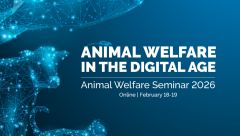We know many things about hens: they are social, inquisitive and curious. They like to move around, stretch their wings, perch and peck at things.
We also know that battery cages are bad for hens, both for their physical and mental health. During our campaign to free hens from battery cages you will have seen many images of hens in battery cages, but here we tell you exactly what battery cages in Australia actually look like.
Battery cages were originally introduced in Australia in the 1950s. Unfortunately, little consideration was given to the welfare of the hens as the industry was guided by economic profits and the need to dramatically increase production in the post-war period. Sadly, this left us with problems that we are still grappling with today. Currently there are nearly 11 million hens stuck in battery cages around Australia.
Battery cages are made completely out of wire on all six sides, which means that the hens are permanently standing on wire. The floors slope downwards so the eggs that are laid can roll down to be collected. Because the hens aren’t given perches, they must stand on this sloped wire floor for their entire lives, with no respite. Cages are generally around 40cm high but can be wide enough to house many hens. It’s a common misconception that each battery cage only houses one single hen; in fact, usually between 4 and 9 hens are crowded into each cage.
However, bigger cages don’t mean more room for the hens - it means that more hens will be placed into the cage. Each hen has a space that’s less than the size of an A4 sheet of paper. Studies have shown that this is not enough space for the birds to spread their wings to stretch, or to move around normally. Cages have a trough that provides food for the hens, which they can access by sticking their heads through the wire. This constant rubbing against the cage wires causes the birds to lose feathers on their neck and front.
The hens live in these cages for their entire lives.
The cages are located in big sheds which can contain thousands of cages next to each other and stacked on top of each other. This is where the name ‘battery cage’ comes from – stacked up together, the cages resemble the cells in a large battery.
Walkways between the rows of cages allow producers to access the hens, though it’s notoriously difficult to properly check hens on the highest and lowest levels. The light inside the shed can be controlled to make the hens lay more eggs and ventilation is also controlled.
The cage egg industry often uses the term ‘conventional cages’ to try and distance themselves from the negative perceptions associated with ‘battery cages’. However, they are one and the same. The space allowed for each bird was increased by around 100cm2 (roughly the size of a postcard) over the past 15 years, but other than that, the battery cages used today are virtually identical to those introduced in the 1950s.
Since the 1950s, much research has been completed and we now know exactly how hens suffer in battery cages. The measurement for good welfare 70 years ago may have been simply based on whether the animal was able to survive and produce – but of course, now we know better and that welfare is about much more than that. Common sense is backed by scientific research that confirms that hens are sentient – they have the ability to feel and to suffer – and that means that we have an ethical responsibility to ensure they have a life worth living.
The confined space of the battery cages as well as the material they are made from, the hens’ lack of ability to move freely and perform their natural behaviours, and the barren environment they’re kept in, all mean that hens in battery cages suffer greatly. Physically, hens can’t move around and stretch out their wings so their muscles become very weak from this lack of movement – the hen may even collapse and become crippled as a result, an effect known as ‘layer hen fatigue’. Their weak bones frequently fracture and break - they may even become paralysed due to spinal bone collapse. For more information about why battery cages are bad for hens, read https://www.rspca.org.au/blog/2016/why-battery-cages-are-cruel.
See also RSPCA Australia’s report on the welfare of layer hens in cage and cage-free housing systems http://www.animalwelfarestandards.net.au/files/2015/07/FINAL_2016-08-The-welfare-of-layer-hens-in-cage-and-cage-free-housing-systems-FINAL.pdf
With the knowledge of exactly what a battery cage looks like and does, it’s easy to make the decision to get rid of them. No animal should have to live their life – or any part of it – in a tiny, barren cage.







